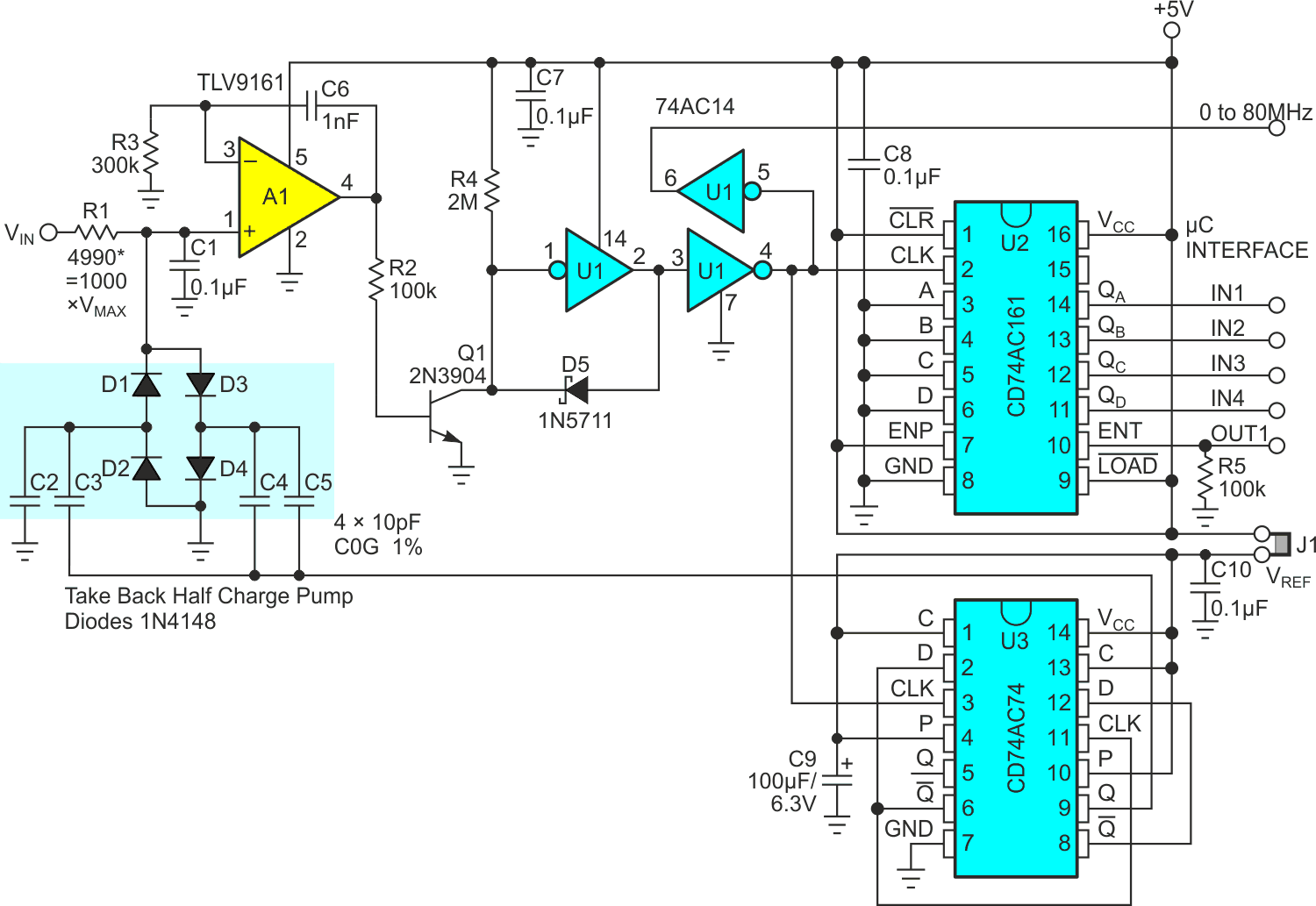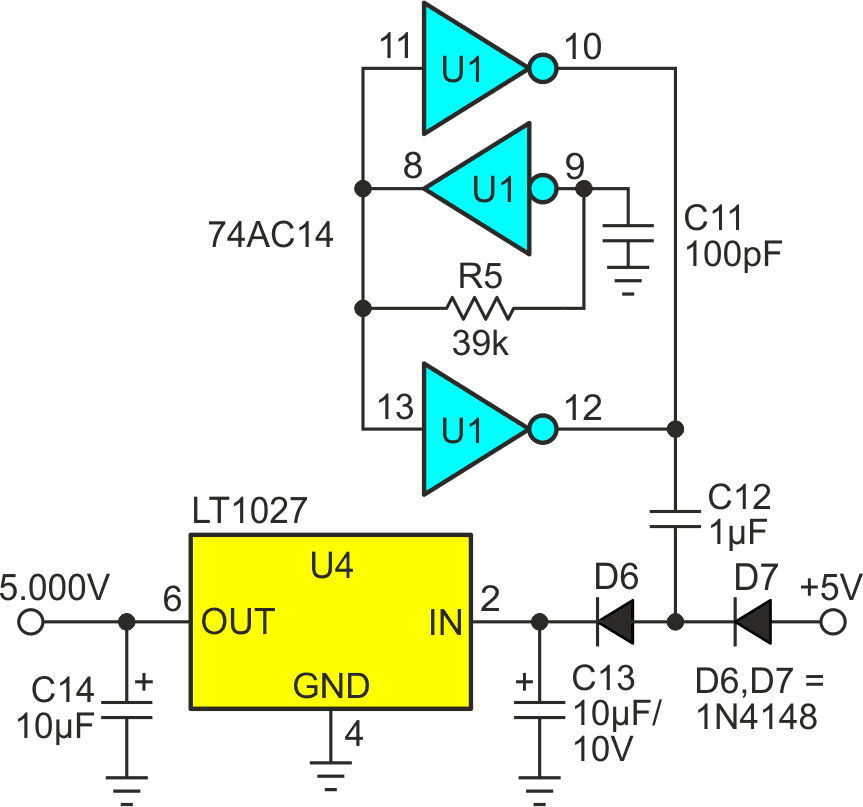In 1986, famed analog innovator Jim Williams, in “Designs for High Performance Voltage-to-Frequency Converters” (Reference 1) published his 100 MHz “King Kong” VFC. If anyone’s ever done a faster VFC, I haven’t seen it. However, Figure 1 shamelessly borrows a few of Kong’s speed secrets and melds them with some other simple tricks to achieve 80% of the awesome speed-of-Kong. I call it “Kid Kong.”
 |
|
| Figure 1. | “Kid Kong” VFC with take-back-half (TBH) pump and ACMOS prescaler can run at 80 MHz. |
What lets the Kid work at a Kong-ish max output frequency with considerably less complexity (about half the parts count) than the King’s? It’s partly the self-compensating TBH diode charge pump described in an earlier Design Idea: “Take-back-half precision diode charge pump” (Reference 2). It also gets help from AC logic family power-thrifty speed that was brand new and just becoming available in 1986. Jim used logic technology that was more mature then, mainly MECL.
The (somewhat tachycardia-ish!) heart of Figure 1’s circuit is the super simple Q1, U1a, D5 ramp-reset oscillator. Q1’s collector current discharges the few picofarads of stray capacitance provided by its own collector, Schmidt trigger U1’s input, D5 and (as little as possible, please) of interconnections. U1’s single-digit-nanoseconds propagation times allows oscillation frequency to run from a dead stop (guaranteed by leakage-killing R4) to beyond 80 MHz, (but not reliably as high as 100). So, the Speed King’s crown remains secure.
Each cycle, when Q1 ramps U1pin1 down to its trigger level, U1 responds with a ~5 ns ramp reset feedback pulse through Schottky D5. This pulls pin 1 back above the positive trigger level and starts the next oscillation cycle. Because the ramp-down rate is (more or less) proportional to Q1’s current, which is (kind of) proportional to A1’s output, oscillation frequency is (vaguely) likewise. The emphasis is on vaguely.
It’s feedback through the TBH pump, summation with the R1 input at integrator A1’s noninverting input, output to Q1 and thence to U1pin 1 that converts “vaguely” to “accurately”. So, what’s U3 doing?
The TBH pump’s self-compensation allows it to accurately dispense charge at 20 MHz, but 80 MHz would be asking too much. U3’s two-bit ripple-counter factor of 4 prescaling fixes this problem.
U3 also provides an opportunity (note jumper J1) to substitute a high quality 5.000v reference for the questionable accuracy of the 5v logic rail. Figure 2 provides circuitry to do that, with a 250-kHz diode charge pump boosting the rail to about 8v to be then regulated down to a precision 5.000. Max U3 current draw, including pump drive, is about 18 mA at 80 MHz, which luckily the LT1027 reference is rated to handle. Just.
 |
|
| Figure 2. | Rail booster and 5.000 volt precision voltage reference. |
The 16x preaccumulator U2 allows use of microcontroller onboard counter-timer peripherals as slow as 5 MHz to acquire a full resolution 80 MHz VFC output. It is described in an earlier DI: “Preaccumulator handles VFC outputs that are too fast for a naked CTP to swallow” (Reference 3). Please refer to that for a full explanation.
References
- Williams, Jim. "Designs for High Performance Voltage-to-Frequency Converters."
- Woodward, Stephen. "Take-back-half precision diode charge pump.”
- Woodward, Stephen. "Preaccumulator handles VFC outputs that are too fast for a naked CTP to swallow."
